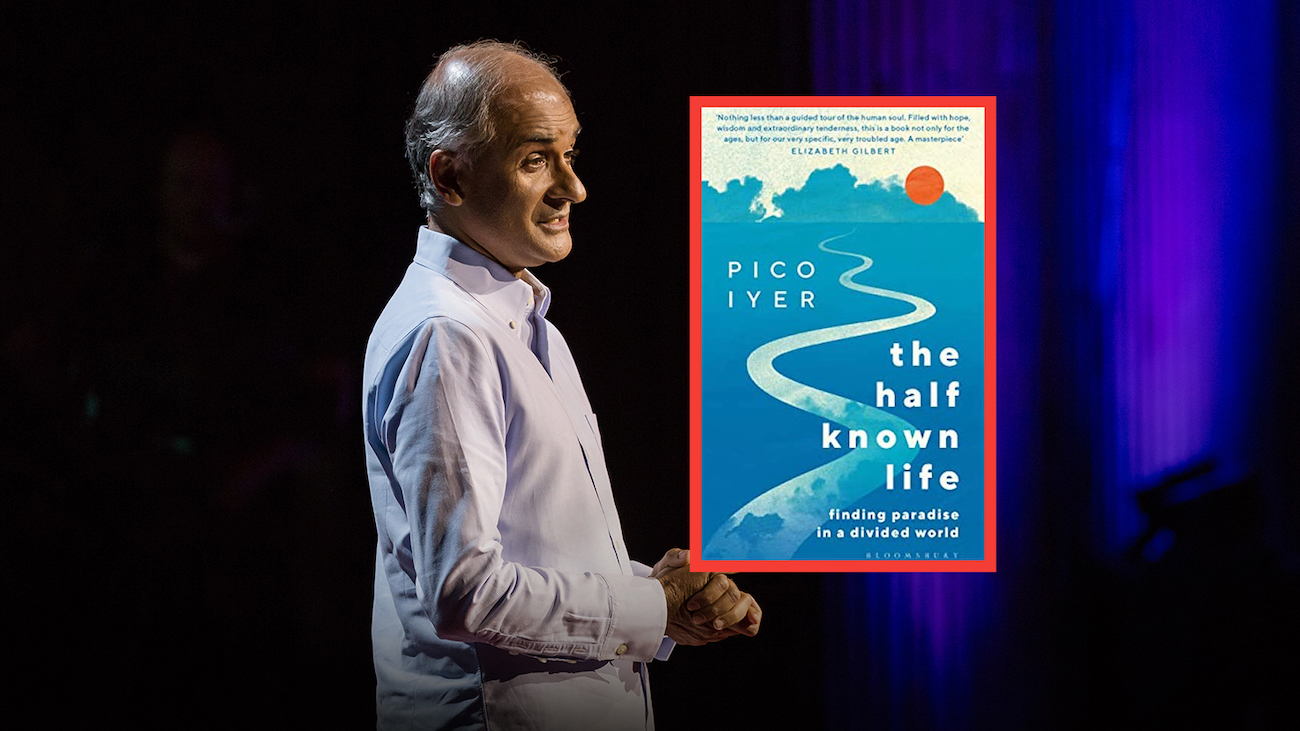Through Warzones and Wastelands: Pico Iyer’s New Book Lays Out a Peregrinator’s Roadmap to Paradise
- “The Half Known Life: In Search of Paradise,” a critic says, “shimmers with wisdom gleaned from exploring the nooks and crannies of the human soul and the world’s urban and rural, secular and religious, landscapes.”

An airport is a place where everyone is from somewhere else, Pico Iyer wrote in one of his lyrical travelogues. And for nearly four decades, this peregrinator has been everywhere else, mailing in epistles about places and people, about the human spirit and human nature.
Iyer, who is arguably one of the most gifted writers of Indian descent, after a Homeric literary quest is about to provide a road map to paradise. His new book, “The Half Known Life: In Search of Paradise,” to be released on January 9, is about “that elusive place where the anxieties, struggles, and burdens of life fall away.” Be it in Iran, Ireland or North Korea, or in the foothills of the Himalayas, where his idol the Dalai Lama lives, Iyer says about Paradise, “Most of us dream of it, but each of us has very different ideas about where it is to be found. For some it can be enjoyed only after death; for others, it’s in our midst–or just across the ocean–if only we can find eyes to see it.”
In its review, Bookpage says, Iyer shares his own search for paradise, “traversing the world’s vibrant religious traditions to uncover paradise’s contours, its purported locations and the role it plays in earthly conflicts.”
Henry L. Carrigan Jr. writes: “With vivid imagery and sterling prose, Iyer documents his wanderings from town to temple. In Tehran, Iran, for example, he learned that Rumi counseled readers to find a heaven within themselves because paradise is not some idyllic place that transcends this world. Rumi’s poetry created a “paradise of words,” Iyer found, amid the unceasing strife of the country’s various Islamic branches. In the Kashmir region of India, which some claim was the location of the Garden of Eden, Iyer embraced a paradisiacal moment as he floated in a houseboat in the middle of a lake. In Sri Lanka, he visited Adam’s Peak, a forest outcropping that Buddhists, Christians and Hindus all claim as sacred ground.”
“Does religion lead us back to Eden or only into constant contention? Why do so many seeming paradises turn into warzones? And does paradise exist only in the afterworld – or can it be found in the here and now?”
The central questions that Iyer seeks to answer, according to Goodreads, is “Does religion lead us back to Eden or only into constant contention? Why do so many seeming paradises turn into warzones? And does paradise exist only in the afterworld – or can it be found in the here and now?”
“For almost fifty years,” Goodreads adds, “Iyer has been roaming the world, mixing a global soul’s delight in observing cultures with a pilgrim’s readiness to be transformed. In this culminating work, he brings together the outer world and the inner to offer us a surprising, original, often beautiful exploration of how we might come upon paradise in the midst of our very real lives.”
Calling it a part travelogue, part theological meditation and part memoir, Carrigan Jr. says, “The Half Known Life shimmers with wisdom gleaned from exploring the nooks and crannies of the human soul and the world’s urban and rural, secular and religious, landscapes.”
Of course, not everyone agrees. Nikhil Krishnan, a Fellow in Philosophy at Robinson College, Cambridge, and almost a fellow Tamilian (Iyer’s father is Tamilian and his mother Gujarati) is one of them. His review in The Telegraph appears under the banner, “around the world in 80 clichés.” His gripe seems to be that Iyer applies “the familiar feature journalist’s method: turn up in some exotic modernizing place, choose an arbitrary theme – Filipino music, Thai massage parlors, Japanese baseball – and use it as a way to “focus the material and to see a culture”. There was no need to learn any new languages; a glancing familiarity with the country’s history would do.”
However, writing in The Wall Street Journal, Danny Heitman compares Iyer to V.S. Naipaul, “another writer whose eclectic cultural background made him an ideal travel writer.” Iyer, he says, “shares Naipaul’s gift for the striking sentence that distills a social observation to its memorable essence.” But there is a difference, too. “While Naipaul’s response to the puzzles of other cultures was often an aching world-weariness, Mr. Iyer seems much too earnest to indulge cynicism,” Heitman adds.
Siddharth Pico Raghavan Iyer was born in Britain in 1957 and completed his early education there — at Eton College and Magdalen College, Oxford. He majored in English literature. His family moved to Santa Barbara, California, in 1964, and Iyer continued his studies on both sides of the pond. According to a Wikipedia entry, Iyer received an A.M. in literature from Harvard University in 1980. He received the [Oxford MA] in 1982. In 2017, along with Plácido Domingo and Mario Vargas Llosa, he was awarded an honorary doctorate (in Humane Letters) by Chapman University.
After teaching at Harvard, Iyer joined Time magazine in 1982, where he wrote about world affairs and was also an essayist, along with the likes of Lance Morrow, Otto von Friedrich, Charles Krauthammer and Michael Kinsley. In 1988, his celebrated essay “In Praise of the Humble Comma” was published.
(Top photo, Courtesy, Marla Aufmuth / TED)


